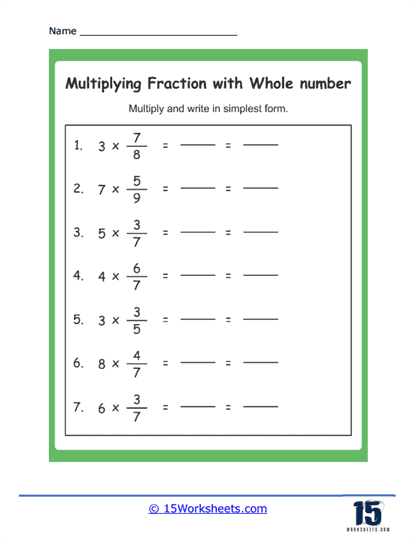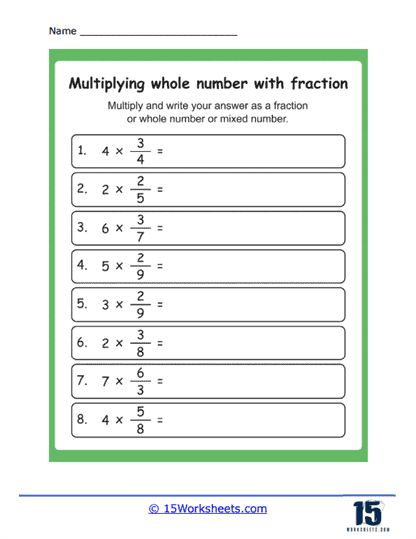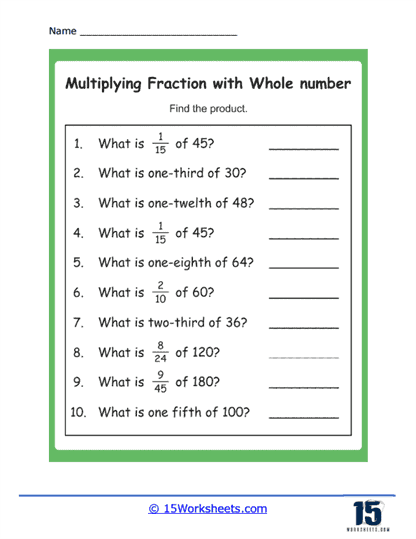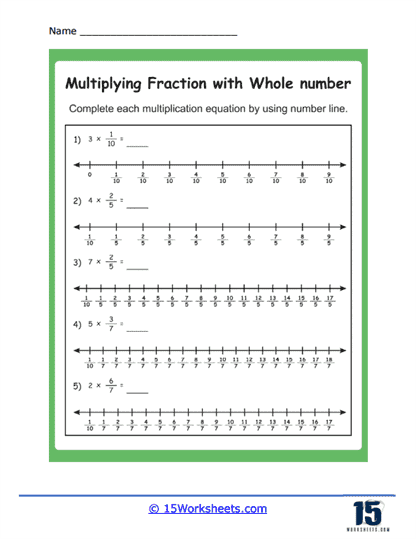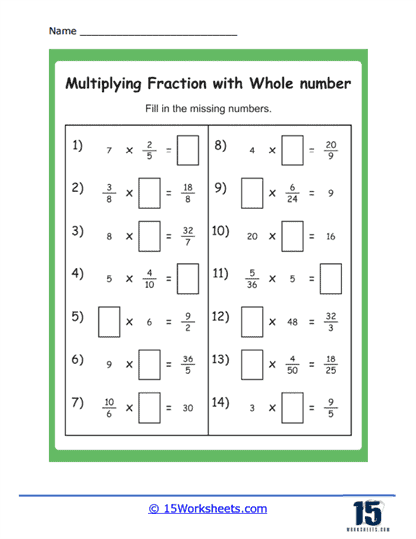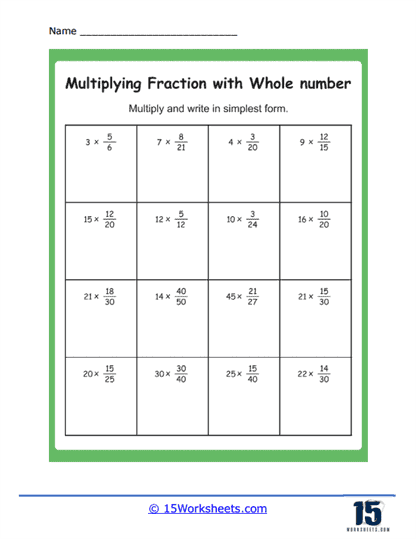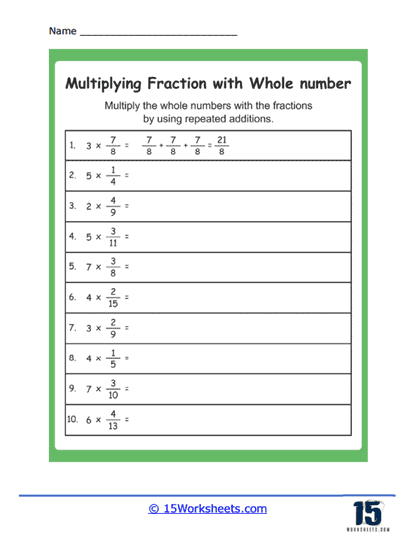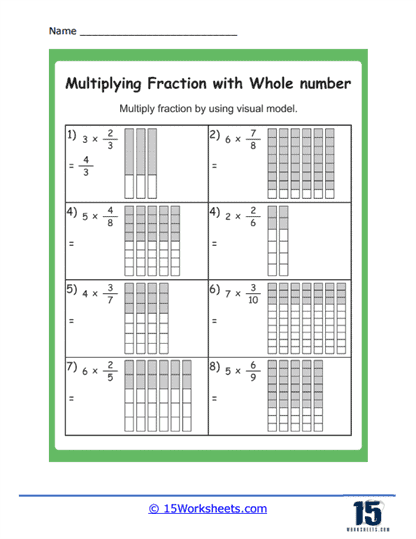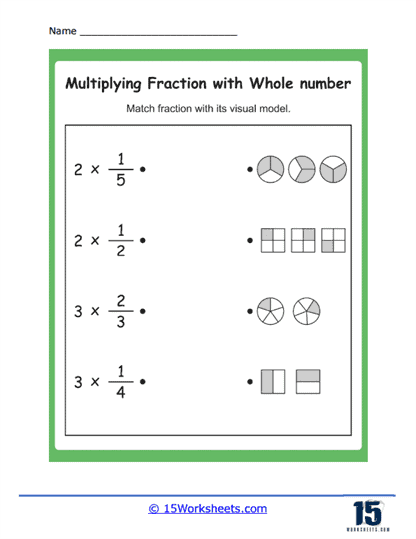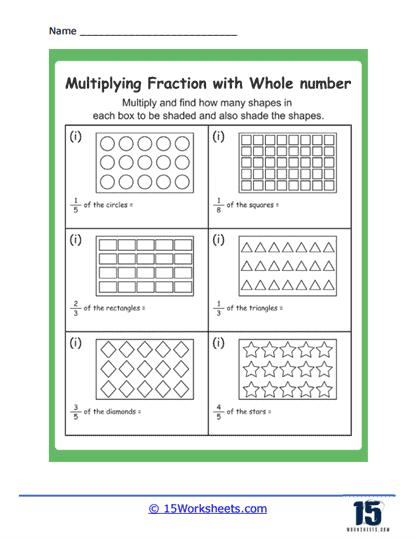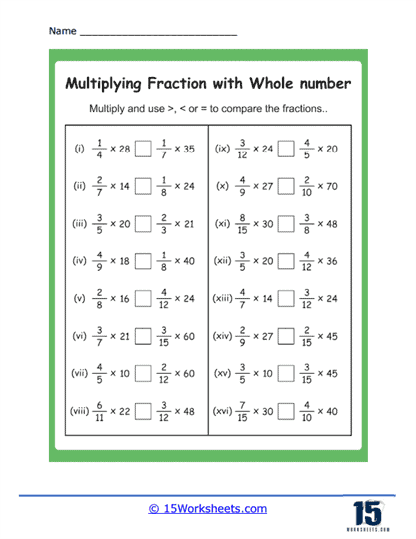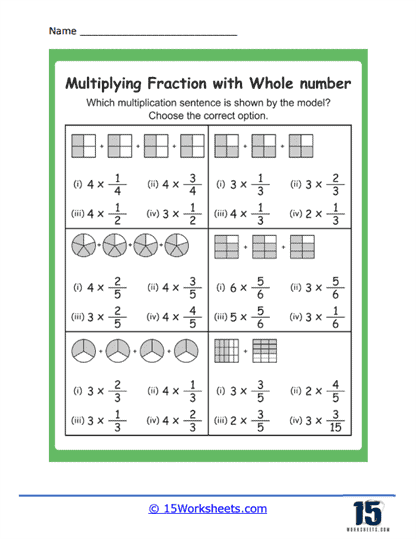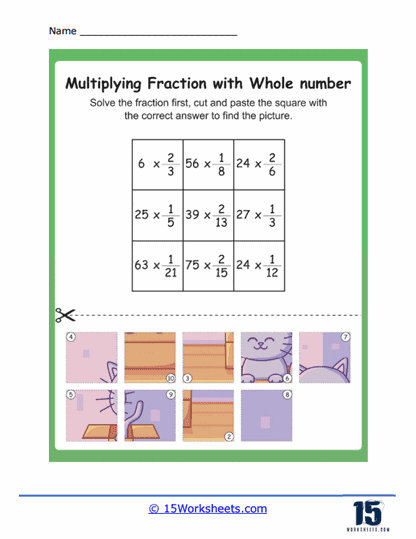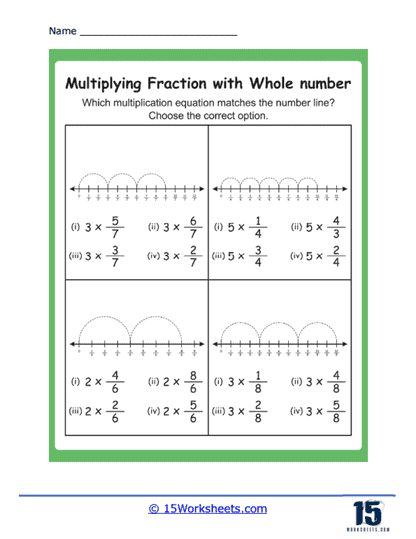Multiplying Fractions with Whole Numbers Worksheets
About These 15 Worksheets
Multiplying Fractions with Whole Numbers Worksheets may seem a bit complex at first, but they’re actually a great tool for mastering an important mathematical concept. Let’s break it down and explore this topic together.
First, it’s essential to know what we’re dealing with. A fraction represents a part of a whole and consists of a numerator (top number) and a denominator (bottom number). A whole number, on the other hand, is a number without fractions-it’s “whole,” like 1, 2, 3, and so on. When we talk about multiplying fractions with whole numbers, we mean taking a fraction (like 1/2) and a whole number (like 3) and multiplying them together.
These worksheets are filled with a variety of exercises that help students practice this concept. Here are some types of exercises you will find over the course of these sheets:
Straight Multiplication – These exercises involve straightforward multiplication of a fraction by a whole number. For instance, “Multiply 3/4 by 2.”
Multiplication with Simplification – These exercises require you to simplify the result into its lowest terms. For example, “Multiply 3/4 by 4 and simplify your answer.”
Multiple Operations – These problems combine multiplication with other operations, like addition or subtraction, to solve more complex equations.
Now, let’s look at how these worksheets help students improve their math skills:
Understanding of Fractions – By multiplying fractions with whole numbers, students deepen their understanding of fractions and their relationship to whole numbers.
Mathematical Fluency – Regular practice helps students become quicker and more accurate in their calculations, a crucial skill for tackling more advanced math concepts.
Problem Solving Skills – Word problems and multiple operations exercises help students develop strong problem-solving skills.
Analytical Thinking – Simplification exercises require students to think analytically and strategically to reduce fractions to their simplest form.
So how does this apply to future math learning? Well, the ability to multiply fractions with whole numbers is fundamental to many areas of mathematics. When students progress to more advanced topics like algebra, they’ll need to know how to multiply variables and fractions. If they have a firm grasp of this concept at an earlier stage, they’ll find these more advanced topics much easier to handle.
Also, multiplying fractions with whole numbers is a useful skill in everyday life. Here are a few examples:
Cooking – If a recipe calls for 1/2 a cup of flour, but you’re doubling the recipe, you need to multiply 1/2 by 2.
Gardening – If a packet of seeds covers 2/3 of a square meter, and you have 3 square meters of garden, you’d need to multiply 2/3 by 3 to find out how many packets you need.
Budgeting – If you want to save 1/4 of your weekly pocket money, and you receive $20 a week, you would multiply 1/4 by $20 to find out how much you should save.
How to Multiply Fractions with Whole Numbers
When you multiply a fraction by a whole number, you just have to multiply the numerator (the top number of the fraction) by the whole number, and keep the denominator the same. Let’s look at this process through two examples:
Example 1 – Multiply 2/3 by 3
Multiply the numerator of the fraction (2) by the whole number (3). This gives you 2 x 3 = 6.
The denominator of the fraction stays the same. So it’s still 3.
Therefore, 2/3 multiplied by 3 equals 6/3.
But we’re not done yet. The answer we got, 6/3, can be simplified to a whole number by dividing the numerator by the denominator. So, 6 ÷ 3 = 2.
So, 2/3 x 3 simplifies to 2.
Example 2 – Multiply 3/4 by 4
Multiply the numerator of the fraction (3) by the whole number (4). This gives you 3 x 4 = 12.
The denominator of the fraction stays the same. So it’s still 4.
Therefore, 3/4 multiplied by 4 equals 12/4.
Similar to the first example, we can simplify our answer. So, 12 ÷ 4 = 3.
Thus, 3/4 x 4 simplifies to 3.

